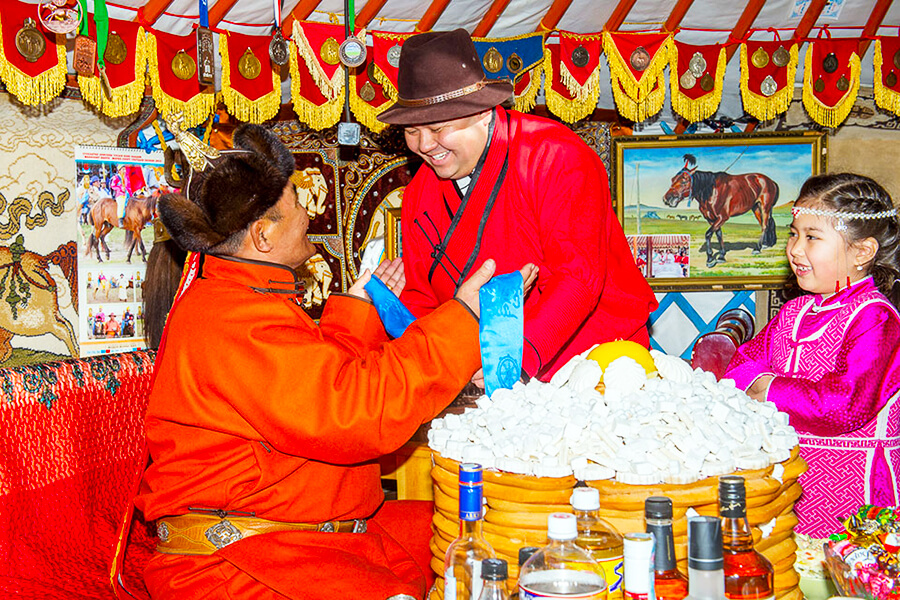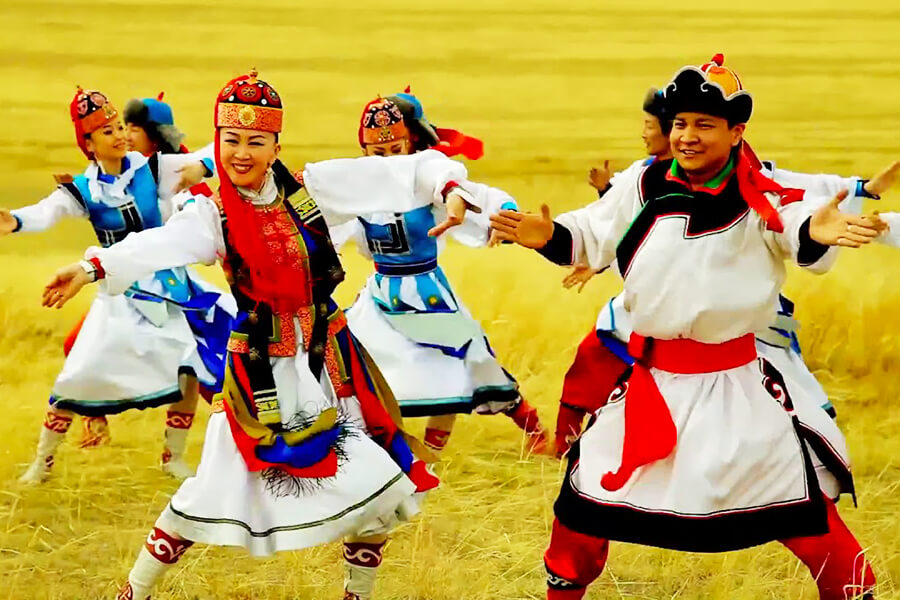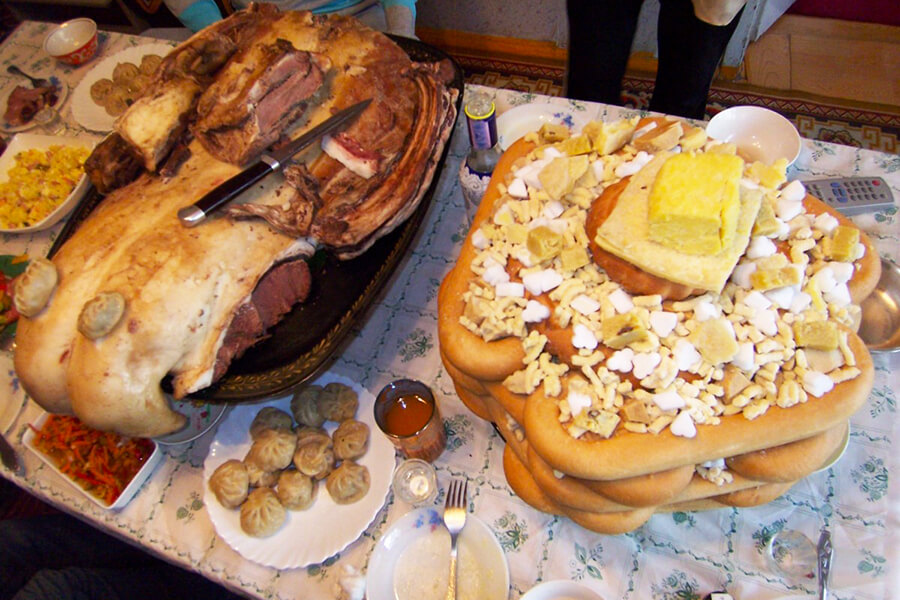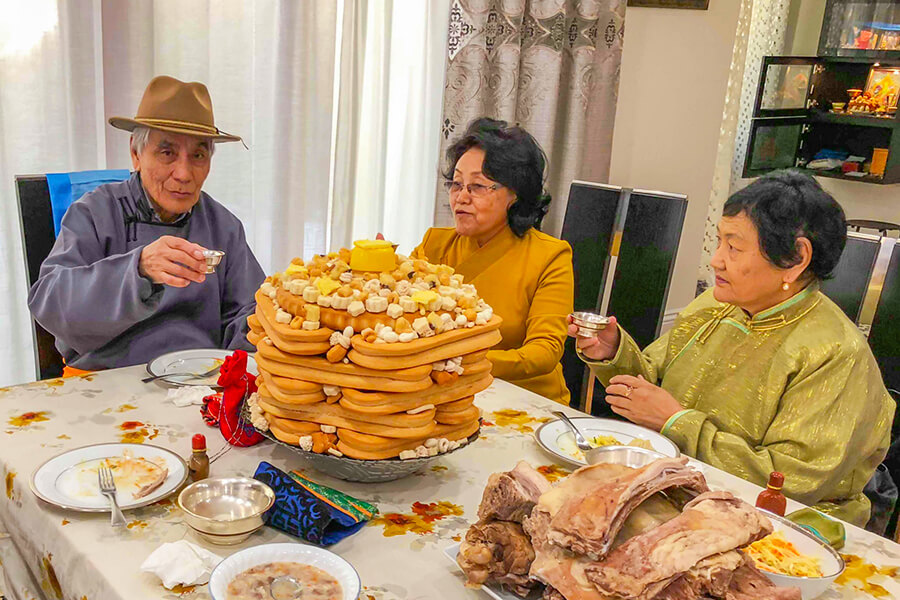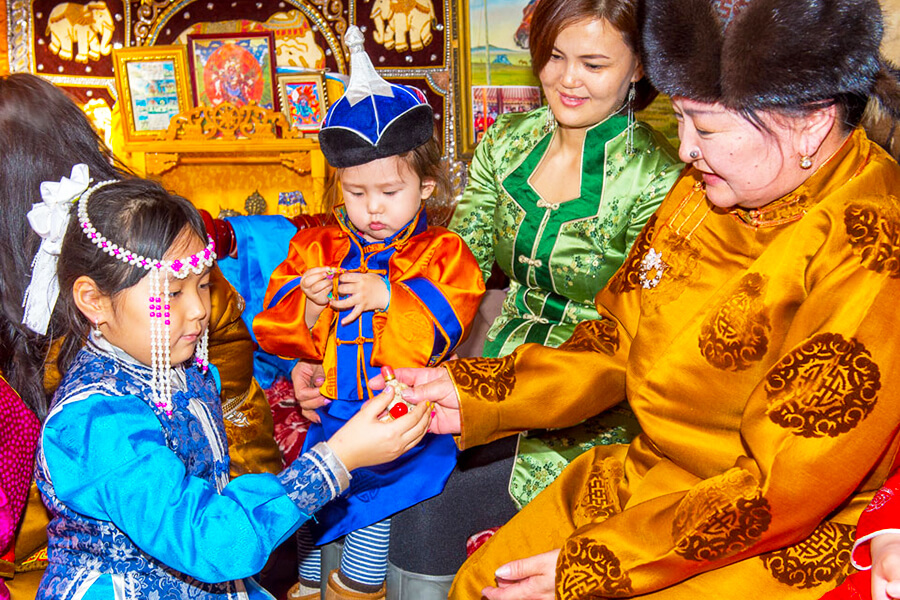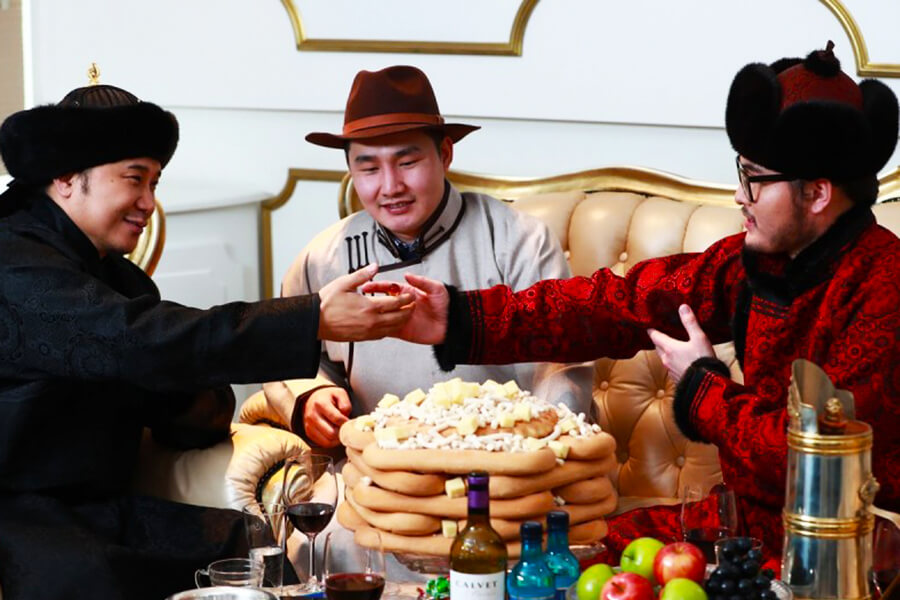The Lunar New Year is observed in Mongolia, a nation renowned for its large green steppes and nomadic lifestyle, on the same calendar as the rest of Asia. Tsagaan Sar, the Mongolian new year, is celebrated from late January until mid-February. Since it heralds the arrival of spring after a long, harsh winter during which hundreds of their animals risked freezing to death, it is the most exciting occasion for the nation's herders who live on the move. Similar to its Chinese version, Tsagaan Sar prioritizes family reunions, but the ceremonies and customs that surround the festival are distinctive.
Tsagaan Sar, which translates to "White Moon," is the name of the biggest traditional celebration in Mongolia vacation, which dates back to the 13th century. Mongols frequently dress in all-white attire, ride a white horse, and feasted at Tsagaan Sar. consuming dairy-based white dishes and exchanging white presents
Tsagaan Sar turns into the festival of family reunion, a time when people frequently visit their relatives and express gratitude to their parents and grandparents. It also provides a chance for young people to learn about customs, national culture, and ancestry. The White Moon Festival is a chance to celebrate herders who have made it through the tough winter and are looking forward to the pleasant spring weather.
Getting Ready for Tsagaan Sar
Mongolians usually get ready for the auspicious new year with the most upbeat and cheerful attitude, getting rid of any bad ideas. During Tsagaan Sar, it is forbidden to have negative thoughts, say unfavorable things, or act negatively. Before the new year, debts must be paid off, and it is advised that no arguments be had because if they are, it is stated that they will continue throughout the year.
Home, clothing, and person all need to be clean in order to celebrate Tsagaan Sar. The Mongols think that a tidy environment will attract good fortune. As a result, there is a ton of work tremendous do to be ready for Tsagaan Sar. Every family is busy cleaning the home and yard at least a month before Tet, mending any damaged furniture inside, putting together traditional Deel costumes, and preparing special meals to be served during the Tsagaan Sar evening.
The elderly in homes frequently arrange a sumptuous meal as a sign of abundance and fullness for the upcoming year. Additionally, they make presents for visitors. Thus, the bond between family members, relatives, and neighbors is strengthened throughout the preparation for Tsagaan Sar.
Traditional Food for Tsagaan Sar
When making exceptional foods, it is the most thrilling and intriguing. The first is a steamed bun with a thin, white dough casing called a Buuz. Some households make a thousand meat buns. When villagers know someone is making meat buns, family and friends will frequently drop by to provide a hand. In addition to meat-filled steamed buns, the Mongols also produce lengthy, dough-based pieces of bread that are baked (this Mongolian bread is called boov). This bread is shaped like the sole of a shoe and has four rounded corners. These bread are frequently analyzed by people who wish to foretell the coming year.
Mongolians make a large tower known as Idee out of boov cakes and other goodies like candy and freeze-dried milk. The tower will be constructed using an unusual amount of tiers of boov cake. The four boovs that make up each layer correspond to the four sides of the idea, which stand for the four directions. For the Mongols, odd numbers represent a happy beginning and a finish to life. According to the social standing and age of the males in the family, the cake will have a certain number of tiers. As an illustration, the idea of the head of state has nine levels, the elderly have seven, a middle-aged family has five, and a young family has three.
The meat must then be spread out close to the Idee Tower as the last stage. Usually, the tail is still attached to the lamb's back, which is gently steamed to prevent curling. According to the Mongols, a sheep's tail is more appetizing if it is larger and fatter. A few days before Tsagaan Sar, lamb is steamed. People also make specialized wine made from horse's milk (airag).
Additionally, the home, the food, and the table must all be prepared for Tsagaan Sar's New Year's Eve, known as Bituun. Bitunn is observed on December 30th (lunar calendar). Families get together to celebrate this day with their parents, grandparents, and other significant people. The Mongols believe that hunger on this day is a sign of impending famine.
People started eating more white food, particularly Tsagaalga, a meal made of white paste made from raisins, rice, curd, yellow butter, wheat, sugar, and salt. The key component that gives this white dish flavor is curd.
Rituals during Tsagaan Sar Days
People typically rise extremely early on the first morning of Tsagaan Sar, dress in traditional attire, and arrange the ideal home before dawn. Women will prepare the first pot of milk tea for the year and take it outdoors to shake it slightly while holding a gleaming new spoon in one hand and their breast firmly on the ground with the other. To view the first dawn of the year, men will ascend to the top of the nearest hill.
The entire family will dress to impress greet guests and interact with family members. The greeting custom known as Zolgolt is especially unique to Mongolia. The eldest individual should be acknowledged first when performing the Zolgolt ceremony. During the Zolgolt salute, they frequently cover their hands with a navy blue scarf. Because it is believed that doing the Zolgolt rite on this day may trigger a divorce or bad luck, the husband and wife refrain from doing so. Due to their belief that the sex of the unborn child may be altered, pregnant women also avoid using the Zolgolt method.
After introducing themselves, everyone sat down and was then served the aforementioned steamed cake, a bowl of milk tea, salt, and butter or cream. Because the Mongols believe the fattiest food to be the best, the most significant person (often the elderly) will be asked to consume it. Such visits typically last about thirty minutes. The owner thanks everyone with presents upon their return.
Although the first 15 days of the year are important, the Mongols only observe the White Moon Festival for three days. People refrain from going out to see other people on the seventh day of the Lunar New Year.
Mongolians return to their regular life after the White Moon Festival in the hopes that their good and pure desires, like white, would come true in the upcoming year.

